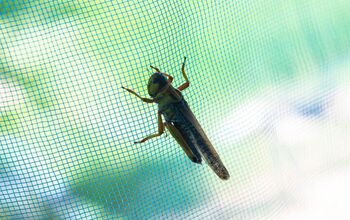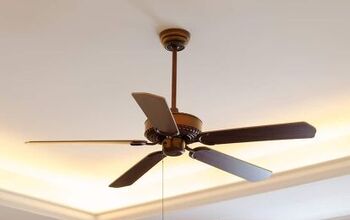How To Test Gold At Home With Bleach (Quickly & Easily!)

All that glitters may not be gold. The jewelry may be an inheritance or a chance find at a garage sale. The question that comes with it is how valuable it is. Is the metal really gold? Could the item be gold plated or just base metal tinted to look like gold? One way to find out is to test your treasure at home with bleach.
One quick home test for real gold is to use common household bleach. Real gold is unreactive to most other substances. Fake gold or gold plate may visibly react to the bleach. A fake piece may change color or be damaged beyond use if it isn’t real gold. Bleach testing is not a conclusive test for gold.
There are other less destructive ways to determine if your treasure find is real gold. However, for a quick test, the bleach alternative is certainly useful. Performing a bleach test is relatively safe and can be done with substances usually found in most homes. A few simple steps will get you the information you want to know.
Performing a Bleach Test on Gold
Don’t rush to the laundry room for bleach to test your gold jewelry just yet. There are some things you need to know before you proceed. You may not want to test that piece of jewelry with bleach for several reasons.
Consider the Value of the Item
If the piece of jewelry you want to test is a family heirloom, the bleach test may not be the best option. Many older pieces of jewelry were either gold plated, or the gold is an alloy of other base metals. A bleach test may well destroy plated or gold alloy jewelry.
The value of your heirloom may not be in its gold content but in the memories and its history. You risk losing those kinds of value if you destroy the item trying to determine if it is gold. Sometimes, the small amount of gold worth far less than the intrinsic values of the piece.
Bleach Testing is Not Conclusive
A bleach test on gold is far from being a conclusive test. There are much better methods for testing gold and gold content than using household bleach. Look for proof marks or makers marks on the jewelry. A jeweler can perform non-destructive tests that are much more definitive than bleach.
Consider the Other Parts of the Jewelry
If the piece of jewelry contains stones or other decorations, you should use great caution. Some natural stones may react badly to the bleach and suffer damage beyond repair. Some antique manmade stones and decoration may dissolve completely in the bleach
To Get a Good Bleach Test, you May Need to Damage the Jewelry
A good job of gold plating may test as real gold. The only way to determine if an item is gold-plated is to scratch the surface. The scratch must be deep enough to penetrate any gold-plating and expose the base metal. A scratch this deep may destroy any value in the item before you even get to the bleach test.
Performing the Test with Bleach
To perform a quick bleach test on gold, follow these steps.
Step 1 – The Bleach
To perform the bleach test, use only plain chlorine bleach. Don’t use colorfast bleach or scented bleach. These types of bleach may contain other compounds that can react badly.
Step 2- The Setup
Pour just enough bleach in a glass bowl or cup to cover the piece you want to test. You don’t need a lot.
Step 3 – Prepare your Item
Find an out-of-the-way spot to make a scratch on the surface of the suspected gold. The scratch must be deep enough to penetrate any gold plating.
Step 4- Drop the Item in the Bleach and Watch Carefully
You must watch carefully. The reaction may be subtle. Look for color changes on the item you are testing. Tell-tale bubbles may occur, or the bleach may change color. If any of these occur, the item is either gold-plated or not real gold. Immediately remove the jewelry from the bleach.
Step 5 – Rinse Thoroughly
Immediately rinse the item you have tested thoroughly under cold running water. You should remove any traces of bleach to prevent any further damage. Dry the piece thoroughly and carefully dispose of the bleach.
How To Test Your Gold Jewelry
What are Your Options?
If you decide that the bleach test is not a real option, what else can you do? There are many other less destructive ways to test a piece of jewelry for gold content. Most of these do not require any damage to the item. In some cases, these other tests and clues will give you much more information than a home bleach test.
Look at Your Gold – Giving your Suspected Gold the Once Over
A good magnifying glass can often tell you as much about the gold in your jewelry as testing. Spending a little time giving your treasures the once over can often reveal the truth about the piece. There are a few things to look for when examining jewelry for clues about its worth.
Look at the Finish. Gold is one of the most stable metals on earth. There are only a few other substances that react with gold. Most of these substances don’t occur naturally, so gold rarely shows any discoloration or chemical change.
Examine your jewelry carefully using a magnifying glass. Look for any discoloration or change in the surface of the suspected gold. Color changes usually point to gold plating or gold mixed with other metals to form a cheaper alloy.
Look for the Markings. Gold Markings or hallmarks are engravings that jewelry manufacturers include on many higher-quality jewelry pieces. Typically, these hallmarks can tell you who made the jewelry and the purity of the gold.
On rings, you can find the hallmarks on the inside of the ring. On necklaces and bracelets, these marks are near the clasp. Some stamps may indicate that the item is not pure gold. Some manufacturers use the following markings.
- HGP – Heavy or Hard Gold Plate
- GF – Gold Filled
- GP – Gold Plated
- HGE – Hydrostatic Gold Electroplating
- GEP – Gold Electroplating
- .925 – Sterling Silver
- 1/20 – 1/20 gold (gold filled)
Numbers stamps such as 800, 925, or 950 indicate that the item is silver rather than gold
Does it Look Like Gold? One last check is to look at the item. Real gold has a soft yellow color that is distinctive. Polished gold will have a luster but not a highly reflective surface shine. An item that is highly reflective or shows any other colors than the distinctive yellow of real gold is suspect.
The Magnet Test
Many times, gold-plate is laid over a dense base metal to simulate gold’s weight and feel. Many of these heavier base metals will react to a magnet. You must use a high-strength magnet for this test.
To perform the test, lay the item on a table or counter and bring the magnet close. If the jewelry is gold plated over a base metal, the jewelry will react to the magnet. The attraction to the magnet is a sure sign that the item in question is not solid gold
This test may not be conclusive. Some base metals are non-magnetic and may not react. A magnetic test is a quick test that can give you a quick check for a base metal but will not prove that the jewelry is solid gold.
Do a Scratch Test
A good preliminary test for gold is to use a jeweler’s stone or unglazed ceramic tile to do a scratch test. Unglazed ceramic tile is easy to source from home improvements stores. You can purchase jeweler stones online for a reasonable price.
To perform this test, rub or scratch the surface of the jewelry across the stone or ceramic. You must use enough force to leave a mark. Take care not to use too much force, or you risk damaging the surface of the jewelry.
Real gold will leave a golden yellow streak on the stone or ceramic. A black streak is a sure sign that the item is fake gold.
Buy a Test Kit
If you want to get down to the nitty-gritty of testing jewelry, you should invest in a gold test kit. These test kits are readily available online and usually have complete instructions. If you routinely buy gold jewelry at flea markets, garage sales, or pawn shops, investing in a good test kit is a wise decision.
A good test kit will allow you to perform several tests on your treasures. The kits contain acid, a testing stone, test needles, and glass beakers to perform the tests. With a little practice, you can perform tests quickly and get a good read on the gold’s carat weight in the jewelry.
Test kits vary in the types of acid tests they can perform. Follow the instruction that comes with your test kit precisely. Failure to follow the directions can give false readings, damage the jewelry, or even cause you injury.
Consult with a Professional – The Definitive Solution
If you are serious about knowing the value of your treasure find, the best solution is to consult with a professional jeweler. Most jewelers have the knowledge, training, and equipment to perform tests that will tell you the exact carat makeup of your piece. Many certified jewelers will also provide an assessment and estimate of the worth of the item.
If you want to ensure these pieces, a certified jeweler’s valuation is usually a requirement of the insurance company.
For Fun or Profit?
Your interest in knowing your gold pieces may stem from a search for profits or simply a hobby. In either case, there are ways to get a quick understanding of whether you have found a true treasure or just a pretty piece of costume jewelry.
We hope this article has answered your question about testing your gold using household bleach. The other methods mentioned are certainly useable as well. In the end, if your goal is to know whether you have discovered gold treasure or an interesting bauble, one of these methods should fit the bill.
Check Out These Guides For Different Uses For Bleach

Dennis is a retired firefighter with an extensive background in construction, home improvement, and remodeling. He worked in the trades part-time while serving as an active firefighter. On his retirement, he started a remodeling and home repair business, which he ran for several years.
More by Dennis Howard



























